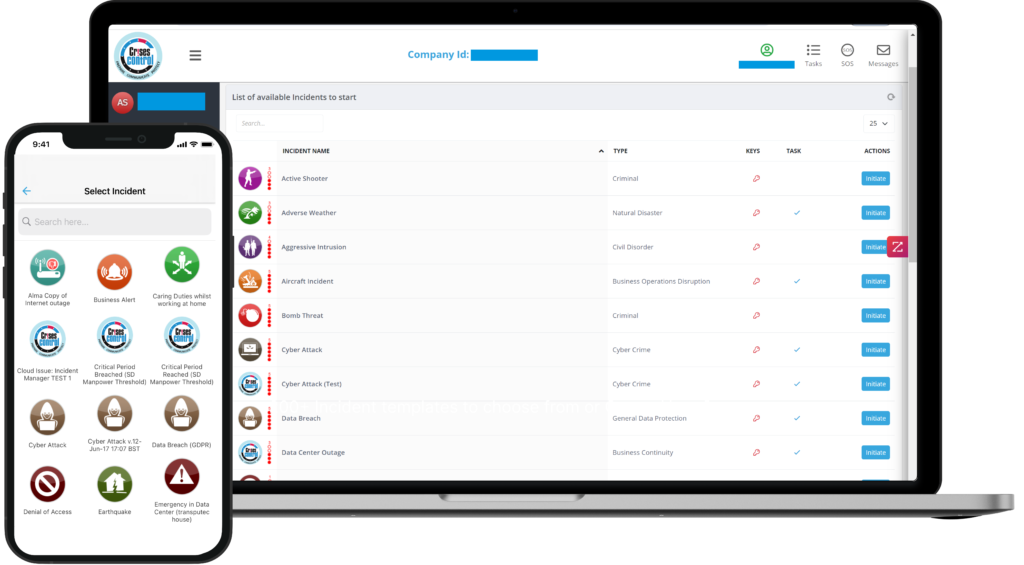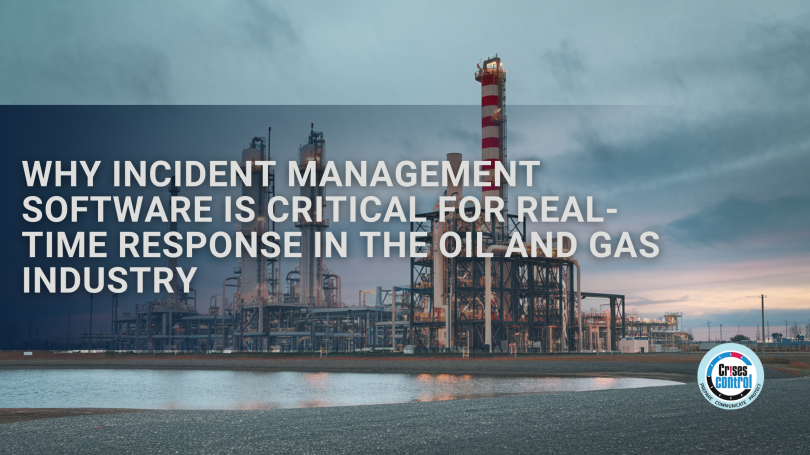Written by Anneri Fourie | Crises Control Executive
In the oil and gas industry, incidents don’t give you a warning. They happen fast, and when they do, there’s no time to waste. A fire, a gas leak, or a cybersecurity breach can spiral into a major disaster in a matter of minutes. That’s why responding quickly and efficiently isn’t just useful, it’s essential.
The risks of a slow or disorganised response go beyond financial loss. They can result in serious injury, long-term environmental harm, and in the worst cases, the loss of life. That’s why every oil and gas company needs a strong, real-time incident management strategy backed by the right technology.
In this blog, we’ll explore why real-time incident management software matters, the risks of outdated response systems, and how a smart solution like Crises Control can help oil and gas operators take control when it matters most.
The Reality of Working in Oil and Gas
There’s no sugar-coating it, oil and gas is a high-risk industry. Whether you’re working offshore, in a refinery, or managing transport pipelines, you’re dealing with dangerous equipment, flammable substances, and high-pressure systems. One mistake or delay can trigger a chain reaction of problems.
Let’s say a fire breaks out at a processing facility. Within minutes, it can spread, threatening workers, equipment, and surrounding areas. If the right people aren’t alerted straight away, if roles aren’t clear, or if communication fails, the damage grows.
Speed isn’t a luxury, it’s a lifesaver. Research has shown that companies that act within the first five minutes of an incident can drastically reduce harm. But many businesses still rely on manual call lists, paper-based plans, or a flurry of emails that leave people confused about what’s happening and what to do.
That’s a risk no operator can afford.
Where Traditional Incident Response Falls Short
Despite the dangers, many oil and gas companies still use outdated or disconnected systems to manage emergencies. These might have worked ten years ago, but they fall apart under the pressure of a real-world crisis.
Here are some common issues we see:
Delayed Notification
Manual call trees and slow email alerts waste precious minutes. By the time everyone who needs to know is informed, the situation has already escalated.
Poor Coordination
Teams often work in silos. One department might be evacuating while another is trying to contain the issue. This leads to duplication, confusion, and missed steps.
No Real-Time Visibility
Decision-makers are left in the dark without a live view of what’s happening. This delays action and increases risk.
Compliance Failures
Many regulators require detailed records of how incidents were handled. Without automated tracking, companies struggle to produce the evidence needed for audits or investigations.
When these gaps add up, a small incident can quickly become a major emergency. That’s why digital tools designed for real-time response are no longer optional, they’re essential.
What Real-Time Incident Management Should Look Like
A strong incident response process doesn’t just react, it guides. It brings clarity when things are chaotic and ensures that every step, every message, and every decision is accounted for.
Here’s what an effective system should include:
Immediate Detection
Your system should connect to alarms, sensors, or even third-party monitoring tools. As soon as something goes wrong, the right people are alerted quickly.
Instant Multi-Channel Alerts
Whether it’s an SMS, a mobile app push, an email, or a voice call, messages need to reach your team fast, and through more than one channel to make sure nothing gets missed.
Clear Task Lists
The moment an incident is triggered, your plan should go live. Pre-assigned tasks help everyone know what to do and when to do it, no second-guessing.
Live Dashboards
Leaders need a central place to see what’s happening, track actions, and make decisions quickly. Guesswork has no place in an emergency.
Automated Reporting
Everything should be tracked in real time—who was alerted, when, what actions were taken—so you can meet your compliance obligations and review performance after the event.
That’s the level of control Crises Control provides to oil and gas companies, and it makes a real difference when seconds count.
How Crises Control Supports Oil and Gas Operators
Crises Control is built for high-risk, high-pressure industries. Our platform is used by organisations around the world to manage incidents from first alert to final report. Here’s what makes it different:
1. Multi-Channel Mass Notification
You can send instant, targeted alerts through SMS, email, app notifications, and voice calls. Each message is trackable, so you know who’s received it and who hasn’t.
2. End-to-End Incident Management
From detecting the issue to managing the response and reviewing the outcome, everything happens on one platform. You can even automate incident triggers through integrations with monitoring systems.
3. SOS Panic Button
For teams in the field or offshore, raising the alarm should be quick and simple. Our mobile app includes an SOS button that immediately alerts the control centre.
4. Task Management in Real Time
Assign tasks automatically. Track progress instantly. See what’s been done and what hasn’t. No delays, no confusion.
5. Built-In Resilience
Crises Control operates from its own cloud infrastructure, separate from your primary IT systems. If your main network goes down, we stay up. This ensures your incident response doesn’t stop, even if everything else does.
6. Automated Reporting
Everything that happens is recorded and time-stamped. Whether you’re preparing for a compliance audit or reviewing performance, the data is ready and accurate.

Interested in our Incident Management Software?
Customise your Crisis Incident Management Software to meet your specific needs with our flexible tools & stay connected and informed during the crisis and incident management process
The Benefits Are Clear
Using real-time incident management software delivers clear, measurable results:
- Faster Response: Seconds are saved at every stage, reducing the scale and impact of incidents.
- Safer Teams: Quick, coordinated action helps protect workers and contractors on site.
- Lower Costs: Less downtime, fewer injuries, and faster recovery all mean less financial damage.
- Environmental Protection: Quick containment of leaks or fires prevents lasting environmental harm.
- Improved Compliance: Automated logs and reports make it easier to meet regulatory requirements.
- Stronger Reputation: Showing that you take safety seriously builds trust with stakeholders, investors, and the public.
Choosing the Right Partner
Technology is only part of the solution. You also need a partner who understands the complexity of your operations and can help you build a response strategy that works in real life, not just on paper.
At Crises Control, we’ve worked with some of the world’s most complex and high-risk environments. We don’t just offer software, we work with you to understand your risks, design effective plans, and make sure your teams are ready.
Make Every Second Count
The oil and gas industry operates on thin margins and tight timelines, but during an emergency, the only thing that matters is time. When something goes wrong, every second you save could mean fewer injuries, less damage, and faster recovery.
Crises Control gives you the tools to act quickly, stay informed, and manage every step with confidence.
Ready to improve your incident response?
Get a free personalised demo and see how Crises Control can help you protect your people, your operations, and your reputation.
Request a FREE Demo








